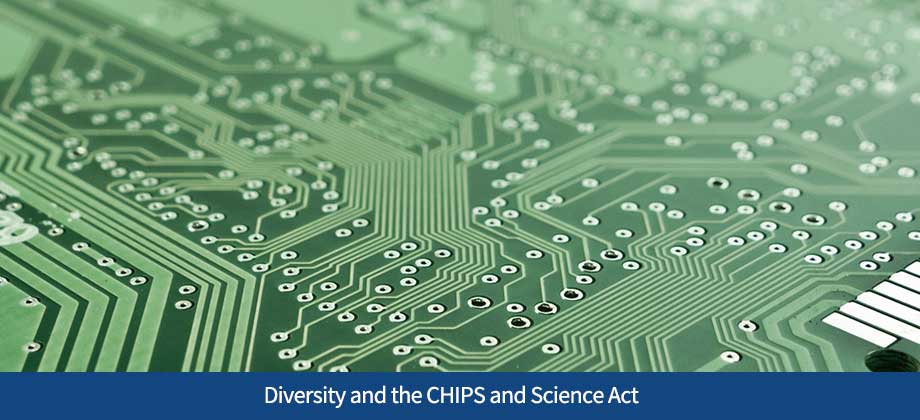Diversity and the CHIPS and Science Act

Diversity in science, technology, engineering, and mathematics (STEM) is becoming an even greater focus of today’s manufacturing giants. The importance of employing people from different backgrounds cannot be understated: diverse employees bring varying perspectives on potential projects, help to improve decision making, present fresh ideas, and inspire new challenges. But up until recently, there wasn’t much—if any—assistance coming from the government to make STEM careers more accessible to underserved communities. For its part, the Biden-Harris administration has put forth an industrial strategy aimed at breathing life back into domestic manufacturing, thus creating well-paying U.S. jobs and a stronger American supply chain. Thanks to these efforts, the building of new manufacturing sites has gone up 116 percent over 2021.
This momentum has kept up with the passing of the bi-partisan CHIPS and Science Act of 2022. According to the White House fact sheet, “It will strengthen American manufacturing, supply chains, and national security, and invest in research and development, science and technology, and the workforce of the future to keep the United States the leader in the industries of tomorrow, including nanotechnology, clean energy, quantum computing, and artificial intelligence. The CHIPS and Science Act makes the smart investments so that Americans can compete in and win the future.”
The act is seen as a win for the Unites States semiconductor and manufacturing industries, and it’s expected to ease some of the supply chain pain we’ve been feeling over the last several years. But another key aspect of the legislation is its investment in underserved students and communities and heavy focus on diversity. How are these investments expected to play out? First of all, the CHIPS and Science Act has created a new position—the chief diversity and inclusion officer—at the National Science Foundation. According to the National Science Foundation’s website, this role is “responsible for providing vision, strategic leadership and management for ongoing agency programs and new initiatives related to diversity, equity, inclusion and accessibility, or DEIA, in the NSF workplace and the STEM enterprise.”
Additional provisions in the CHIPS and Science Act offer brand new and expanded investments in STEM education and training, going from K-12 to community college, plus undergrad and graduate education. There’s a focus on Historically Black Colleges and Universities (HBCUs) as well as other institutions that serve minority communities. While the act covers off on increased access to education, it also grants institutions the tools they need to address sexual and gender-based harassment in the sciences by providing research funding to understand harassment in STEM and develop intervention strategies.
One of the greatest impacts we can make on the manufacturing workforce is to promote diversity as much as possible. When we employ people from all walks of life in the manufacturing industry, we’re given the gift of new talent, new viewpoints, and new ideas. Thanks to the efforts of the White House and the CHIPS and Science Act, we’re one step closer to bringing in a new wave of STEM recruits. This will allow us to remain competitive in the marketplace and build the strongest future possible.

